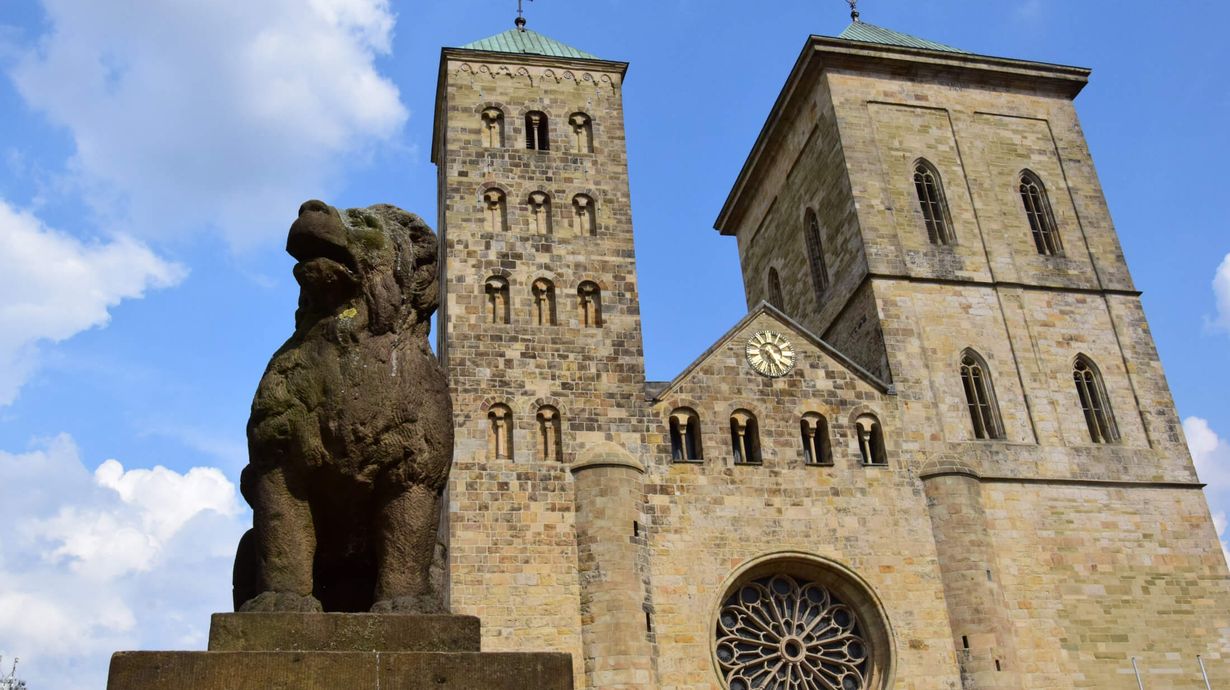Sitting on a stele in front of St Peter's Cathedral is the image of a lion resembling a poodle. The Osnabrück sculptor Lukas Memken (1860-1934) created the current replica from Ibbenbüren sandstone in 1925. As stone sculptures exposed to wind and rain only last a few centuries, it can be assumed that there were already several of these figures in the past. The predecessor of the current lion poodle can be found in the Museum of Cultural History in Osnabrück.
Historical background
It is not known when the figure was given the name lion poodle. As poodle breeding only began in Germany in the 19th century, the term probably only became established from this period onwards. In earlier times, the monument was referred to as "Löwenstein" or "Der steinerne Löwe". The figure was first mentioned in 1331 and it is assumed that the lion's poodle (or lion's stone) was associated with the Gogericht, a kind of precursor to today's district court. It is also attributed to a conflict between Emperor Frederick Barbarossa and the Guelph duke Henry the Lion, who exercised bailiwick over the cathedral district around 1170. He thus secured the highest clerical position in the mini-state of the diocese of Osnabrück. The Guelph planned to expand his power, which the emperor wanted to avoid. Barbarossa tried to break Henry's power and gave the citizens of the city their own jurisdiction. However, this only applied to the citizens themselves and did not include the nobility and clergy. Henry the Lion is said to have marked his own judicial district at the entrance to the cathedral castle with a stone lion, which signalled to all onlookers his high jurisdiction exercised here.
The legend of the lion's poodle
As time passed, the symbolic power of the "stone lion" faded and with it the memory of its actual significance. The people of Osnabrück gave their old emblem a new, legendary story, which is said to have taken place during the Saxon Wars of the eighth century: Not long ago, the citizens of the town had sworn allegiance to the Frankish King Charlemagne. He had had the cathedral built on the left bank of the River Hase. Now he heard that life in Osnabrück was no longer quite so Christian, that the citizens had harboured his opponent, the Saxon Duke Wittekind, and that the Franks had been driven out of the city. Charles wanted to atone for this betrayal and the city was to atone for the breach of faith. He therefore swore that he would cut off the head of the first person he met in Osnabrück. When he reached the gates of the city, his sister came to meet him. She wanted to stand up for the citizens of Osnabrück . Karl, who did not want to harm her, prayed to God to send him a sign. His sister's poodle jumped up to him and licked his hand. Karl then cut off the dog's head, thereby fulfilling his oath. Out of sheer gratitude for the happy outcome, the people of Osnabrück then had the image of the poodle carved in stone in front of the cathedral as a reminder of his lion-like deed. It still stands guard there today.






